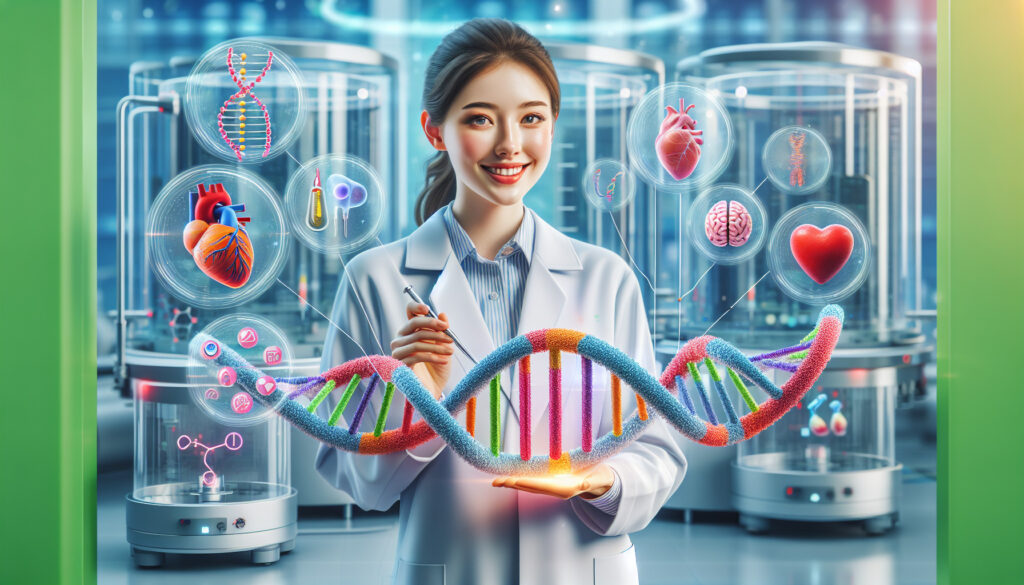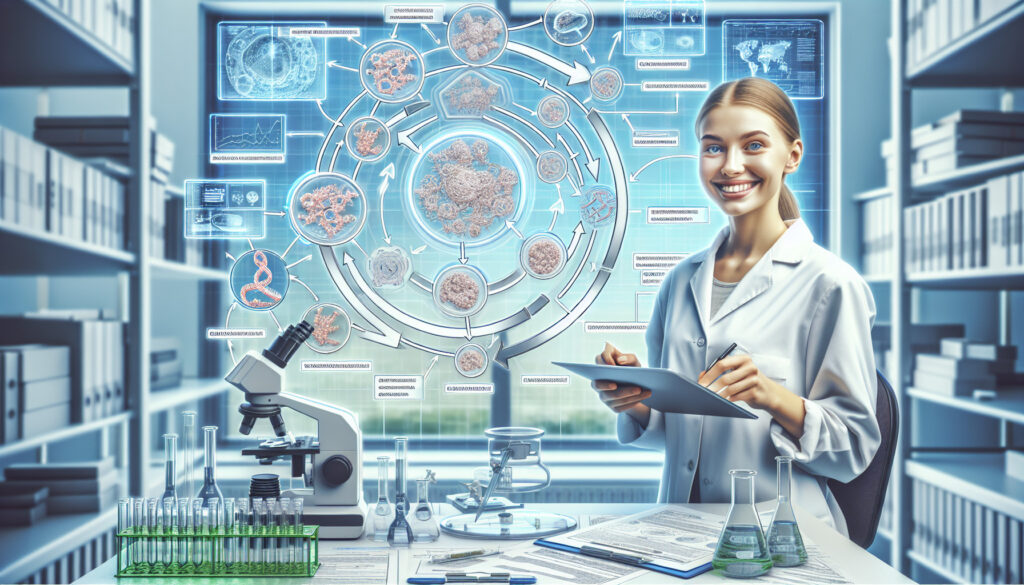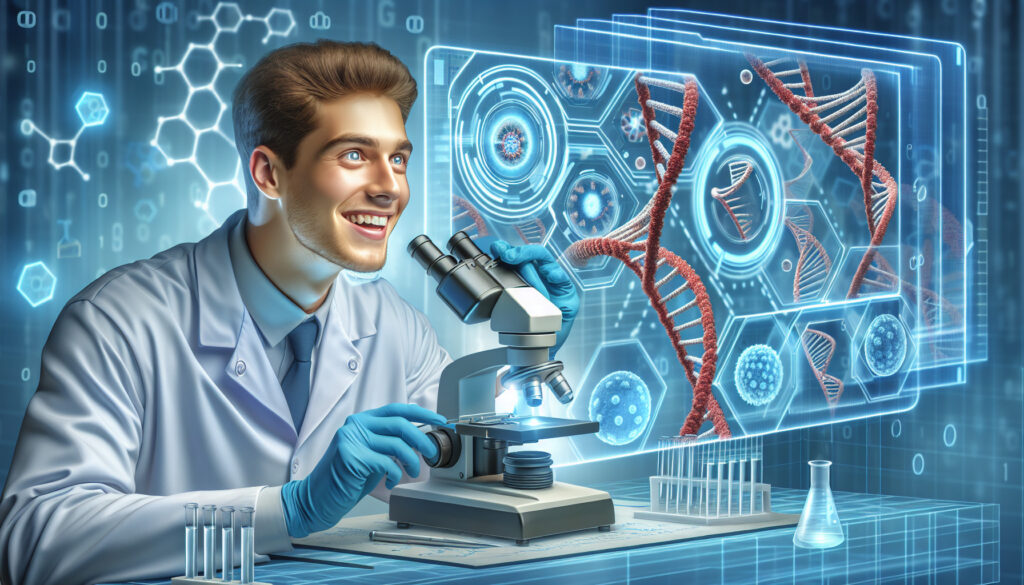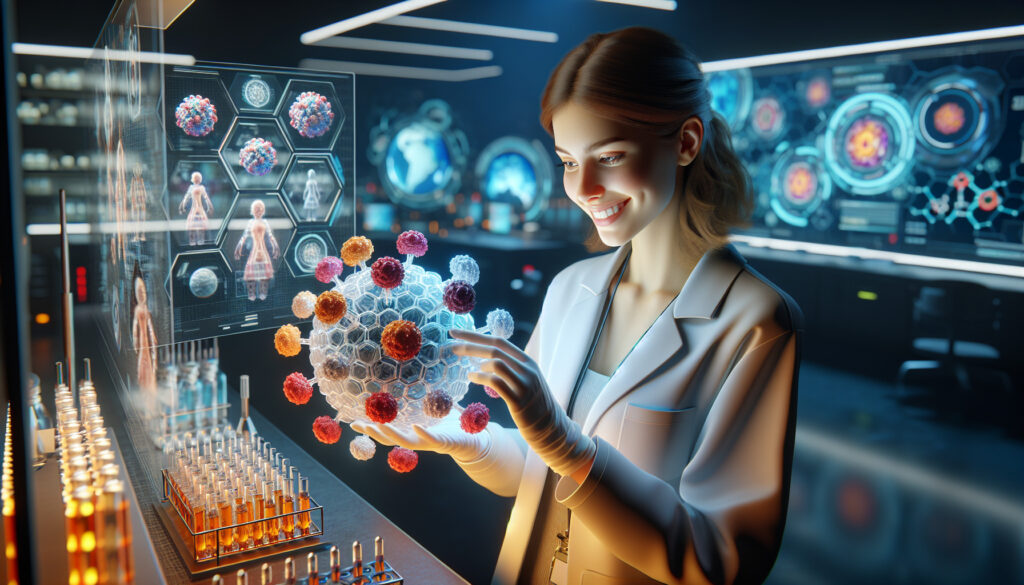
Have you ever wondered about the cutting-edge medicines that are revolutionizing healthcare? 🧬💊 Welcome to the fascinating world of biopharmaceuticals – a realm where biology meets pharmaceuticals to create groundbreaking therapies. These innovative drugs are not just changing lives; they’re reshaping the entire landscape of modern medicine.
But what exactly are biopharmaceuticals, and why are they causing such a stir in the medical community? Unlike traditional drugs, biopharmaceuticals are derived from living organisms, harnessing the power of nature to combat some of the most challenging diseases. From cancer treatments to therapies for rare genetic disorders, these biological marvels are opening doors to possibilities that were once thought impossible.
In this exploration of the biopharmaceutical universe, we’ll delve into the intricate world of these revolutionary drugs. We’ll uncover how they’re developed, examine their wide-ranging applications, and look at the economic powerhouse they’ve become. Join us as we navigate through the complexities of this industry, from its promising breakthroughs to its daunting challenges, and glimpse into the future of medicine. 🚀🔬

Understanding Biopharmaceuticals
A. Definition and key characteristics
Biopharmaceuticals are complex medicinal products derived from biological sources, such as living organisms or their cellular components. These innovative drugs are characterized by their large molecular size, intricate structures, and production through biotechnological processes. Key characteristics include:
- High specificity and potency
- Complexity in manufacturing and quality control
- Potential for personalized medicine
- Often used to treat chronic and rare diseases
B. Types of biopharmaceuticals
Biopharmaceuticals encompass a diverse range of products, each with unique properties and applications:
- Monoclonal antibodies
- Recombinant proteins
- Vaccines
- Gene therapies
- Cell therapies
- Tissue-engineered products
| Type | Description | Example |
|---|---|---|
| Monoclonal antibodies | Proteins that target specific molecules | Adalimumab (Humira) |
| Recombinant proteins | Proteins produced using genetic engineering | Insulin |
| Vaccines | Biological preparations that stimulate immunity | HPV vaccine |
| Gene therapies | Products that modify or manipulate gene expression | Luxturna |
C. Difference from traditional pharmaceuticals
Biopharmaceuticals differ significantly from traditional small-molecule drugs in several aspects:
- Origin: Biopharmaceuticals are derived from living organisms, while traditional drugs are chemically synthesized.
- Complexity: Biopharmaceuticals have larger, more complex molecular structures compared to small-molecule drugs.
- Manufacturing: Production of biopharmaceuticals involves living cells and sophisticated biotechnology processes, whereas traditional drugs are synthesized through chemical reactions.
- Stability: Biopharmaceuticals are generally less stable and more sensitive to environmental conditions than small-molecule drugs.
- Administration: Many biopharmaceuticals require injection or infusion, while most traditional drugs can be taken orally.
These differences contribute to the unique challenges and opportunities in the development, production, and application of biopharmaceuticals in modern medicine. As we delve deeper into the biopharmaceutical industry landscape, we’ll explore how these characteristics shape the market and drive innovation.

The Biopharmaceutical Industry Landscape
As we delve deeper into the world of biopharmaceuticals, it’s crucial to understand the complex landscape that shapes this industry. From stringent regulations to cutting-edge technologies, the biopharmaceutical sector is a dynamic and rapidly evolving field.
A. Regulatory environment
The biopharmaceutical industry operates under a highly regulated framework to ensure patient safety and product efficacy. Key regulatory bodies include:
- FDA (Food and Drug Administration) in the United States
- EMA (European Medicines Agency) in Europe
- PMDA (Pharmaceuticals and Medical Devices Agency) in Japan
These agencies oversee various aspects of biopharmaceutical development, including:
- Clinical trials
- Manufacturing processes
- Quality control
- Post-market surveillance
B. Emerging trends and technologies
The biopharmaceutical landscape is constantly evolving, driven by scientific advancements and technological innovations. Some notable trends include:
| Trend | Description |
|---|---|
| Gene therapy | Targeting genetic disorders at their source |
| Personalized medicine | Tailoring treatments to individual patient profiles |
| AI and machine learning | Accelerating drug discovery and development processes |
| 3D bioprinting | Creating complex tissue structures for research and potential transplantation |
C. Current market size and growth projections
The biopharmaceutical market has experienced significant growth in recent years:
- Global market value: Estimated at $325 billion in 2020
- Projected CAGR: 7.32% from 2021 to 2028
- Key growth drivers: Aging population, increasing chronic diseases, and advancements in biotechnology
D. Major players and market leaders
The biopharmaceutical industry is dominated by several key players, each contributing significantly to the sector’s growth and innovation:
- Roche
- Novartis
- Pfizer
- Amgen
- Gilead Sciences
These companies lead in areas such as oncology, immunology, and rare diseases, constantly pushing the boundaries of what’s possible in biopharmaceutical research and development.
As we move forward, it’s clear that the biopharmaceutical industry will continue to play a crucial role in addressing global health challenges. Next, we’ll explore the intricate development process of biopharmaceuticals, shedding light on the journey from concept to market-ready product.

Development Process of Biopharmaceuticals
Now that we’ve explored the biopharmaceutical industry landscape, let’s delve into the intricate process of developing these complex drugs.
Research and Discovery Phase
The development of biopharmaceuticals begins with extensive research and discovery. Scientists identify potential therapeutic targets and design biological molecules to interact with these targets. This phase involves:
- Computational modeling
- In vitro experiments
- Target validation studies
Preclinical Studies
Once a promising candidate is identified, it moves to preclinical testing. This phase evaluates the drug’s safety and efficacy in laboratory and animal models. Key aspects include:
- Toxicology studies
- Pharmacokinetics and pharmacodynamics analysis
- Dosage formulation
Clinical Trials
Clinical trials are crucial for demonstrating the safety and efficacy of biopharmaceuticals in humans. This phase is typically divided into three stages:
| Stage | Purpose | Participants |
|---|---|---|
| Phase I | Safety and dosage | 20-100 healthy volunteers |
| Phase II | Efficacy and side effects | 100-300 patients |
| Phase III | Large-scale efficacy and monitoring | 300-3000 patients |
Manufacturing Challenges
Biopharmaceutical manufacturing is complex and requires specialized facilities. Challenges include:
- Maintaining consistent product quality
- Scaling up production
- Ensuring sterility throughout the process
- Managing living cell cultures
Regulatory Approval Process
The final hurdle in biopharmaceutical development is obtaining regulatory approval. This process involves:
- Submitting comprehensive data to regulatory agencies (e.g., FDA, EMA)
- Addressing any questions or concerns raised by regulators
- Conducting post-approval studies and monitoring
With the development process outlined, we’ll next explore the various applications and therapeutic areas where biopharmaceuticals are making significant impacts.

Applications and Therapeutic Areas
Biopharmaceuticals have revolutionized modern medicine, offering innovative solutions for a wide range of medical conditions. Let’s explore some of the key areas where these advanced treatments are making a significant impact.
A. Personalized Medicine
Biopharmaceuticals are at the forefront of personalized medicine, tailoring treatments to individual patients based on their genetic makeup and specific health needs. This approach offers several advantages:
- Improved efficacy
- Reduced side effects
- Better patient outcomes
| Traditional Medicine | Personalized Medicine |
|---|---|
| One-size-fits-all | Tailored approach |
| Trial and error | Targeted treatment |
| General effectiveness | Individual precision |
B. Rare Diseases
For patients with rare diseases, biopharmaceuticals offer hope where traditional treatments may fall short. These innovative therapies can:
- Target specific genetic mutations
- Address previously untreatable conditions
- Improve quality of life for patients with rare disorders
C. Autoimmune Disorders
Biopharmaceuticals have transformed the treatment of autoimmune disorders, providing more targeted and effective therapies. Key benefits include:
- Modulation of the immune system
- Reduction of inflammation
- Long-term management of chronic conditions
D. Oncology
In the field of oncology, biopharmaceuticals are driving significant advancements:
- Targeted therapies
- Immunotherapies
- Combination treatments
These innovative approaches are improving survival rates and quality of life for cancer patients across various types and stages of the disease.
As we’ve seen, biopharmaceuticals are making substantial contributions across multiple therapeutic areas. Next, we’ll explore the economic impact and investment opportunities in this rapidly growing field.

Economic Impact and Investment Opportunities
The biopharmaceutical industry has become a significant driver of economic growth and innovation, offering numerous investment opportunities. Let’s explore the key aspects of its economic impact.
A. Mergers and Acquisitions in the Industry
Mergers and acquisitions (M&A) play a crucial role in shaping the biopharmaceutical landscape. These strategic moves allow companies to:
- Expand their product portfolios
- Gain access to new technologies
- Enter new markets
- Achieve economies of scale
Here’s a snapshot of recent M&A trends in the biopharmaceutical industry:
| Year | Notable M&A Deals | Value (USD) |
|---|---|---|
| 2021 | AstraZeneca – Alexion | $39 billion |
| 2020 | Gilead Sciences – Immunomedics | $21 billion |
| 2019 | Bristol-Myers Squibb – Celgene | $74 billion |
B. Investment Trends in Biopharmaceuticals
The biopharmaceutical sector continues to attract substantial investments due to its potential for high returns and groundbreaking innovations. Key investment trends include:
- Increased funding for gene and cell therapies
- Rise in venture capital investments for biotech startups
- Growing interest in AI and machine learning applications in drug discovery
- Surge in investments for vaccine development and pandemic preparedness
C. Job Creation and Economic Growth
The biopharmaceutical industry is a significant contributor to job creation and economic growth. It offers:
- High-skilled employment opportunities
- Indirect job creation in related sectors
- Substantial contributions to GDP
- Boost to local economies through research centers and manufacturing facilities
For instance, in the United States alone, the biopharmaceutical industry supports over 4 million jobs and contributes more than $1.3 trillion to the economy annually.
As we move forward, the biopharmaceutical sector faces both exciting opportunities and significant challenges. Let’s explore these aspects in the next section to gain a comprehensive understanding of the industry’s future outlook.

Challenges and Future Outlook
The biopharmaceutical industry faces several challenges while also presenting exciting opportunities for the future. Let’s explore some of the key issues and prospects:
A. Emerging markets and global expansion
As developed markets become increasingly saturated, biopharmaceutical companies are looking towards emerging markets for growth. This expansion brings both opportunities and challenges:
- Opportunities:
- Large, untapped patient populations
- Rising middle class with increased healthcare spending
- Potential for local partnerships and collaborations
- Challenges:
- Regulatory differences and complexities
- Cultural and linguistic barriers
- Infrastructure limitations in some regions
B. Access and affordability issues
One of the most pressing challenges in the biopharmaceutical industry is ensuring widespread access to innovative treatments while maintaining affordability:
| Issue | Impact | Potential Solutions |
|---|---|---|
| High drug prices | Limited patient access | Value-based pricing models |
| Healthcare disparities | Unequal treatment availability | Public-private partnerships |
| Insurance coverage gaps | Financial burden on patients | Patient assistance programs |
C. Patent expirations and biosimilars
As patents for blockbuster biologic drugs expire, the industry faces increased competition from biosimilars:
- Opportunities for biosimilar manufacturers to enter the market
- Pressure on innovator companies to develop new pipeline products
- Potential for reduced healthcare costs through increased competition
- Challenges in demonstrating biosimilarity and gaining regulatory approval
D. High development costs
The biopharmaceutical industry continues to grapple with the high costs associated with drug development:
- Average cost to bring a new drug to market: $1-2 billion
- Long development timelines (10-15 years on average)
- High failure rates in clinical trials
To address these challenges, companies are exploring innovative approaches such as:
- Artificial intelligence and machine learning for drug discovery
- Adaptive clinical trial designs
- Collaborative research initiatives and partnerships
As we look to the future, the biopharmaceutical industry must navigate these challenges while continuing to innovate and deliver life-changing therapies to patients worldwide.

Biopharmaceuticals represent a revolutionary frontier in modern medicine, offering innovative solutions for complex health challenges. From understanding their unique properties to exploring their diverse applications across therapeutic areas, the biopharmaceutical industry continues to push the boundaries of scientific discovery and patient care.
As we look to the future, the biopharmaceutical sector presents both exciting opportunities and significant challenges. With its substantial economic impact and potential for groundbreaking treatments, it remains an attractive field for investment and research. By staying informed about industry developments and supporting continued innovation, we can help shape a healthier future for generations to come.

